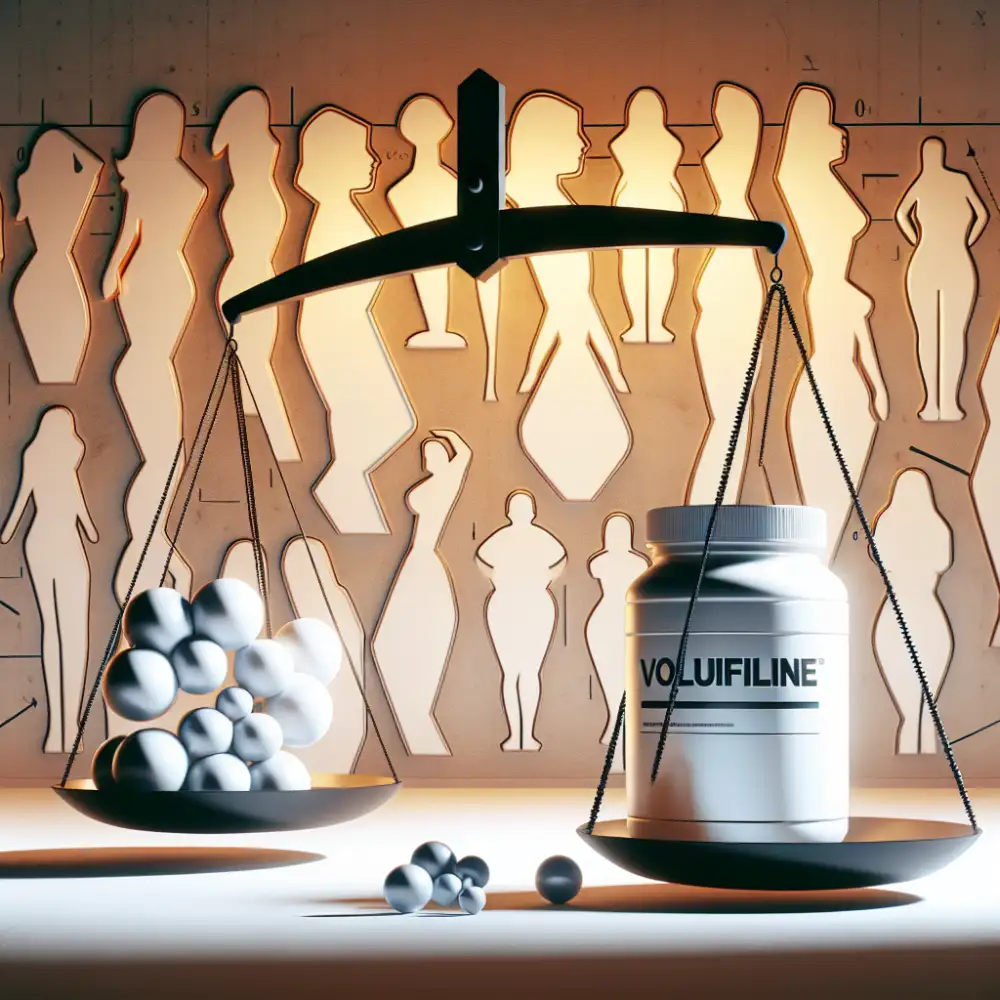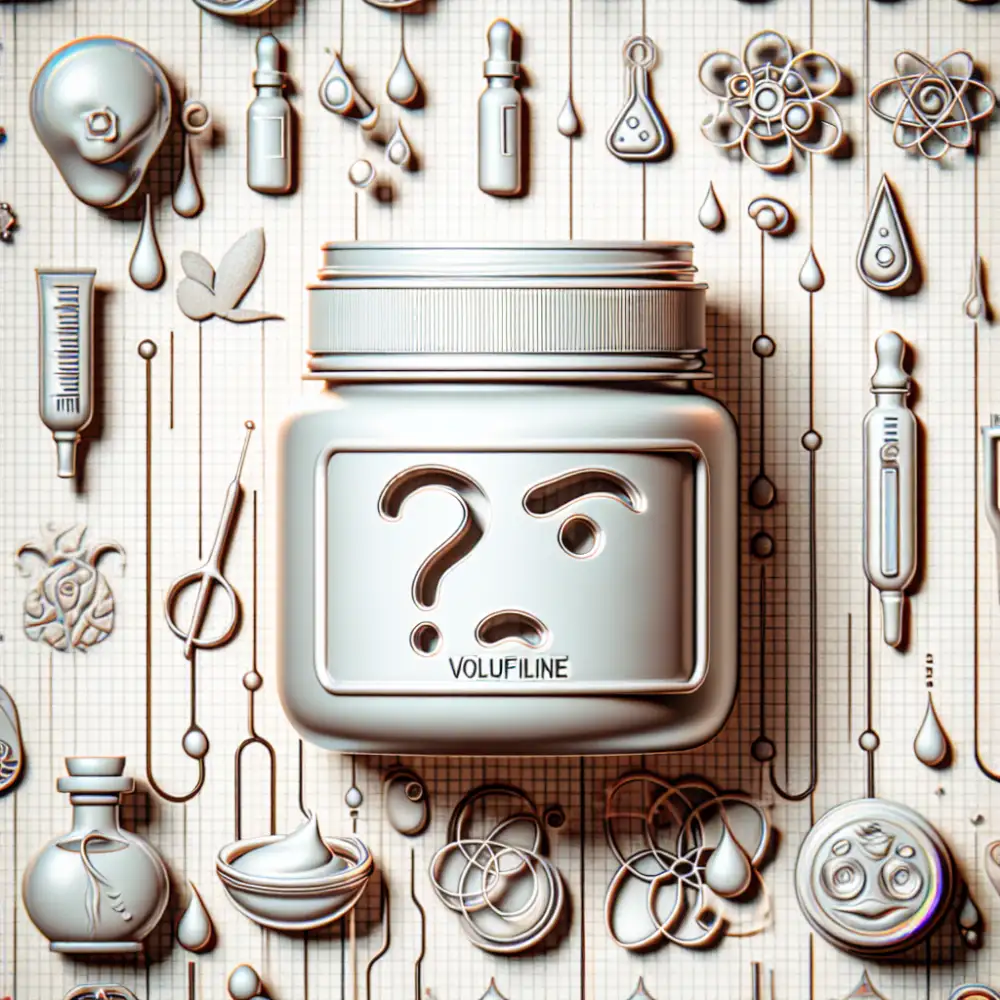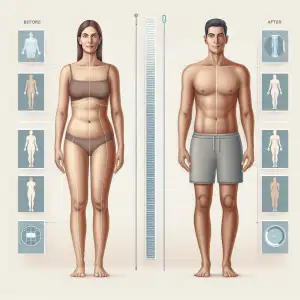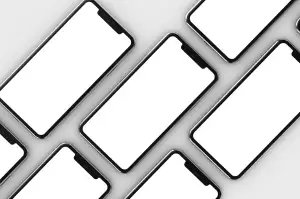Does Volufiline Really Work? What You Need to Know

What is Volufiline?
Volufiline is a cosmetic ingredient found in various creams and serums marketed for breast and buttock enhancement. It contains sarsaparilla extract, a natural plant extract. Some believe it can increase the volume of these areas by promoting fat cell growth. However, scientific evidence supporting these claims is limited.
While some small studies suggest Volufiline might temporarily plump the skin, these studies are often funded by the manufacturers of Volufiline itself, which raises concerns about potential bias. Additionally, the observed effects are usually minimal and temporary, disappearing once the product is no longer used.
It's also important to note that Volufiline is not a drug and has not been evaluated or approved by the Food and Drug Administration (FDA) for breast or buttock enhancement. Therefore, its safety and long-term effects remain largely unknown.
Before considering any product containing Volufiline, it's crucial to consult with a healthcare professional. They can provide personalized advice based on your individual health status and goals. Remember, a healthy lifestyle, including a balanced diet and regular exercise, remains the most effective and sustainable way to achieve a toned physique.
How Volufiline claims to work
Volufiline is marketed as a non-hormonal alternative for enhancing curves, typically in the breasts and buttocks. It often claims to work by mimicking the body's natural fat storage process, particularly during puberty. The key ingredient, sarsasapogenin, a plant extract, is said to stimulate adipogenesis, the formation of new fat cells, specifically in targeted areas. This, in theory, leads to increased volume and a curvier appearance. However, the scientific evidence supporting these claims is limited and inconclusive. While some in-vitro studies suggest sarsasapogenin might influence adipocyte activity, these are often conducted on isolated cells and don't necessarily translate to real-world effectiveness in humans. Large-scale, independent clinical trials are lacking, making it difficult to definitively confirm or refute Volufiline's efficacy. Many anecdotal testimonials praise its effectiveness, but these are subjective and potentially influenced by placebo effects or lifestyle factors. It's crucial to approach such products with a healthy dose of skepticism and consult a healthcare professional for evidence-based advice on body contouring options.
Scientific evidence for Volufiline
Volufiline is a cosmetic ingredient found in various creams and serums marketed for enhancing curves, particularly in the breasts and buttocks. It is derived from a plant called sarsaparilla and is claimed to work by stimulating adipogenesis, the process of fat cell creation and growth. However, scientific evidence to support these claims is limited.

While some in-vitro studies suggest that Volufiline might promote adipocyte differentiation and lipid accumulation in fat cells, these findings haven't been consistently replicated. More importantly, these studies were conducted on isolated cells in a laboratory setting, and their relevance to real-world effectiveness is questionable.
Clinical trials investigating the efficacy of Volufiline in humans are scarce and often suffer from methodological limitations. Some small-scale studies have reported modest increases in breast or buttock volume after several weeks of Volufiline use. However, these studies often lack control groups or use subjective measurement methods, making it difficult to determine if the observed changes are genuinely due to Volufiline or other factors.
Furthermore, the purported mechanism of action of Volufiline, stimulating adipogenesis in specific areas, raises skepticism. Fat deposition patterns in the body are complex and influenced by various factors, including genetics, hormones, and overall body composition. It is unlikely that a topical cream could selectively induce significant fat cell growth in targeted areas without affecting other body parts.
In conclusion, while Volufiline is marketed as a curve enhancer, the scientific evidence supporting its effectiveness is weak and inconclusive. More rigorous, well-designed clinical trials are needed to determine if Volufiline can deliver on its claims. Consumers should be cautious about products making bold assertions about Volufiline's efficacy and consult with a healthcare professional before using any new cosmetic product.
Studies on Volufiline's efficacy
Volufiline is marketed as a non-surgical alternative for enhancing curves, particularly in the breasts and buttocks. It is a cosmetic ingredient, not a medication, and its effectiveness claims are rooted in its purported ability to stimulate adipogenesis, the process of fat cell creation. While some proponents point to in vitro studies suggesting Volufiline can increase lipid storage in fat cells, these studies are limited and do not necessarily translate to noticeable results in humans.
Clinical trials specifically investigating Volufiline's effect on breast or buttock size are scarce. Existing studies are often small, short-term, and funded by companies with a vested interest in the product's success. This makes it difficult to draw definitive conclusions about its real-world efficacy. Many anecdotal testimonials praise Volufiline's effectiveness, but these are subjective and can't replace rigorous scientific evidence.
Ultimately, whether Volufiline works as advertised remains debatable. More independent, well-designed clinical studies are needed to determine if it can deliver on its promises. Consumers should approach claims of significant curve enhancement with caution and consult with a healthcare professional before using any product containing Volufiline.

Potential side effects of Volufiline
Are there safer alternatives?While Volufiline might sound tempting, it's crucial to acknowledge the lack of scientific consensus on its effectiveness. The studies supporting its claims are often limited in scope and conducted by the manufacturers themselves, raising concerns about potential bias.
| Feature | Volufiline | Alternative Methods |
|---|---|---|
| Mechanism of Action | Stimulates adipocyte differentiation and proliferation | Varies (e.g., exercise targets muscle growth, surgery directly alters body shape) |
| Scientific Evidence | Limited clinical studies, some showing modest results | Varies, generally more robust for established methods like exercise and surgery |
| Cost | Varies depending on product and usage | Varies widely (e.g., exercise can be low-cost, surgery is expensive) |
| Time to See Results | Weeks to months (if any) | Varies (e.g., exercise results are gradual, surgery is immediate but requires recovery) |
| Side Effects | Generally considered safe, but individual reactions may occur | Varies widely depending on the method |
| Permanence | Temporary; results may diminish after discontinuing use | Varies (e.g., surgery is generally permanent, exercise benefits require maintenance) |
So, what are the safer alternatives? Honestly, focusing on overall health and well-being is a far more sustainable and reliable approach. This includes:
A balanced diet rich in fruits, vegetables, and lean protein can provide the nutrients your body needs for overall health, including skin elasticity.
Regular exercise, particularly strength training, can help build muscle mass, which can contribute to a more sculpted appearance.
Staying hydrated is crucial for skin health, which can indirectly impact the appearance of curves.
Managing stress through techniques like yoga or meditation can have positive effects on your hormonal balance and overall well-being.
Remember, true beauty comes from within. While topical creams might offer a temporary fix, investing in your long-term health and embracing your natural body shape is always the most empowering and sustainable choice.
Expert opinions on Volufiline
Volufiline is a popular ingredient in many cosmetic products claiming to enhance curves, particularly in the buttocks and breasts. It is a combination of sarsasapogenin, a plant steroid found in certain yams, and hydrogenated polyisobutene, a thickener. While some users report noticeable results, the scientific evidence supporting these claims is limited. Some small studies suggest that Volufiline might stimulate adipogenesis, the process of fat cell creation, leading to increased volume in the targeted areas. However, these studies are often conducted on cell cultures or small sample sizes, making it difficult to draw definitive conclusions about their effectiveness in humans. Many dermatologists and cosmetic chemists remain skeptical, emphasizing the lack of large-scale, independent clinical trials to confirm its efficacy. They argue that the observed effects, if any, might be attributed to factors like skin hydration or temporary swelling rather than actual fat cell growth. More research is needed to understand the long-term effects and potential risks associated with Volufiline use. Consumers should approach such products with caution and manage their expectations. It is crucial to consult with a qualified healthcare professional before using any product containing Volufiline, especially if you have underlying health conditions or are pregnant or breastfeeding.
User reviews and experiences
User reviews and experiences with Volufiline for curve enhancement are mixed, reflecting the product's controversial nature in the beauty industry. Many users express disappointment, claiming little to no noticeable difference in their breast size or shape after using Volufiline-containing creams or serums as directed. These skeptical consumers often question the product's effectiveness, suggesting the advertised results might be overly optimistic or even misleading. Conversely, some users report positive experiences, noting subtle but encouraging changes in their bust's fullness and firmness after consistent product use over several weeks or months. These satisfied customers often emphasize the importance of realistic expectations, acknowledging that Volufiline is not a miracle solution for dramatic breast enlargement but might offer modest improvements for some individuals. However, scientific evidence supporting Volufiline's efficacy remains limited, with most studies being small, company-funded, or lacking rigorous scientific methodology. This lack of independent, peer-reviewed research contributes to the uncertainty surrounding Volufiline, making it challenging to definitively confirm or refute its effectiveness. Ultimately, individual experiences with Volufiline vary greatly, likely influenced by factors like body chemistry, product formulation, application consistency, and individual expectations. Therefore, approaching such products with a healthy dose of skepticism and consulting a healthcare professional for personalized advice is crucial.
The effectiveness of Volufiline, a product marketed for enhancing curves, particularly in the bust, remains a topic of debate. While some users report noticeable changes after consistent use, scientific evidence supporting these claims is limited. Volufiline, often found in topical creams and serums, is believed to work by mimicking the effects of estrogen, potentially leading to increased fat cell volume in targeted areas. However, these effects are temporary and require continued product use.

Furthermore, individual results can vary greatly depending on factors like genetics, age, and overall health. It's important to approach such products with realistic expectations, understanding that they are not a substitute for a healthy lifestyle or a guaranteed solution for body contouring. Consulting with a healthcare professional is always recommended before incorporating new products into your routine, especially if you have underlying health conditions or are pregnant or breastfeeding.
Published: 28. 06. 2024
Category: Health



